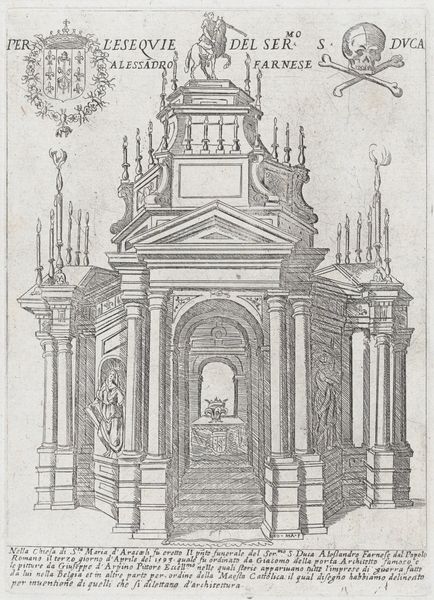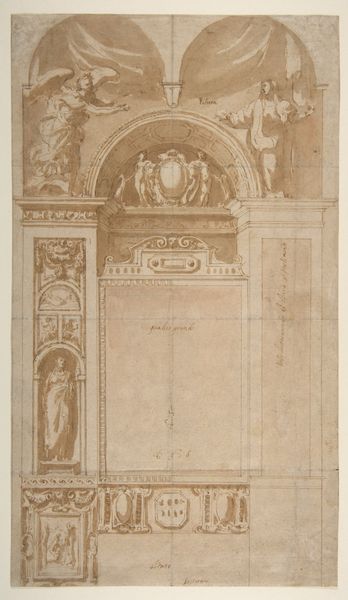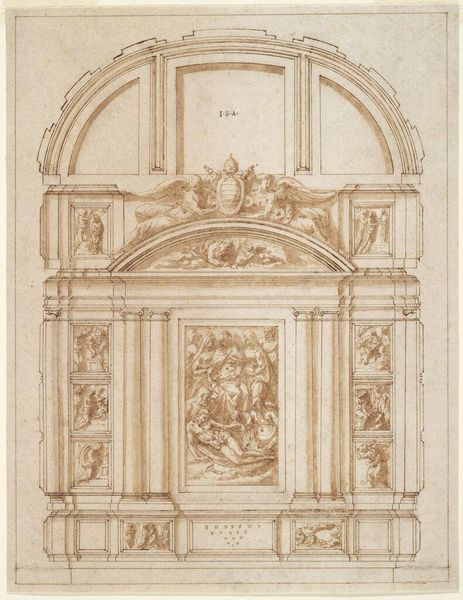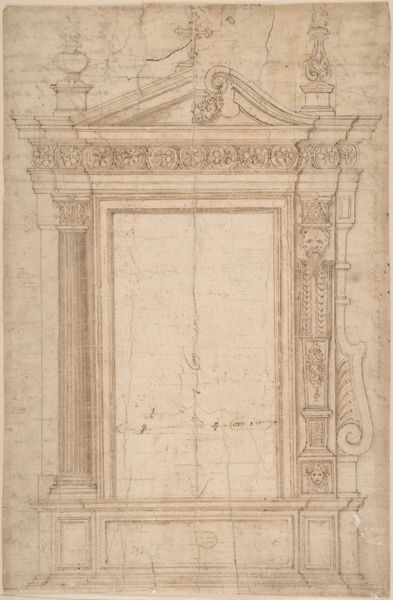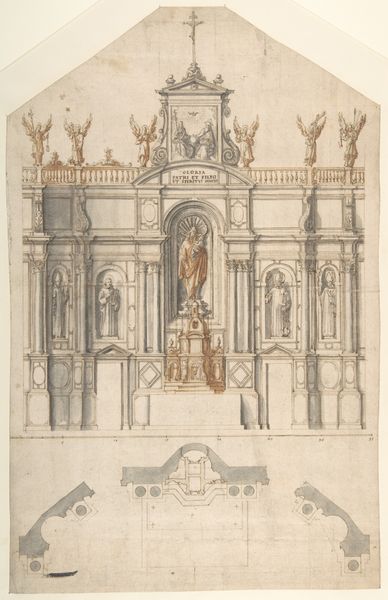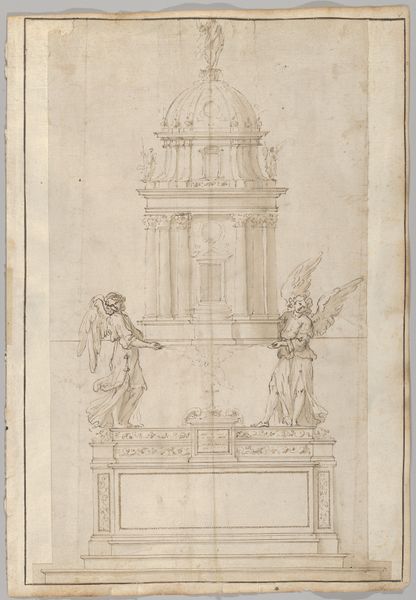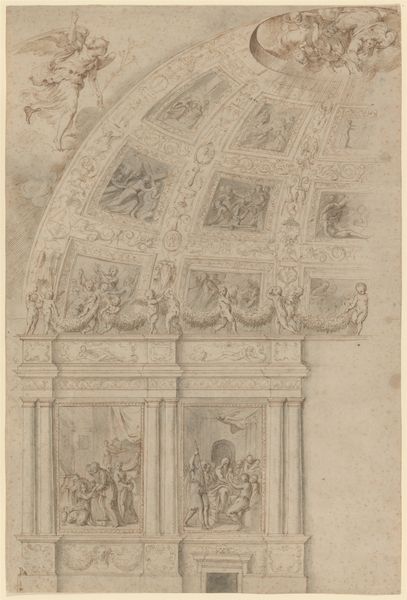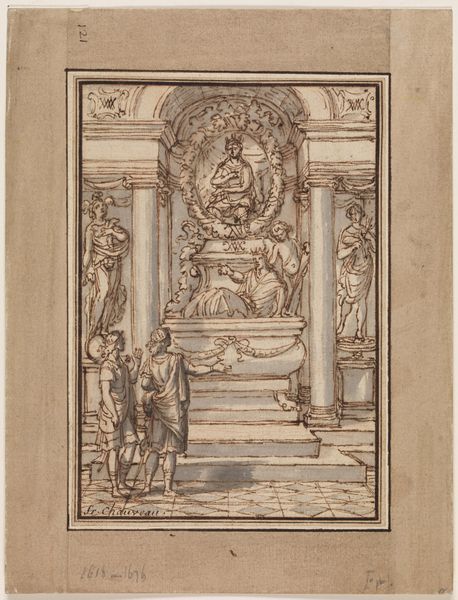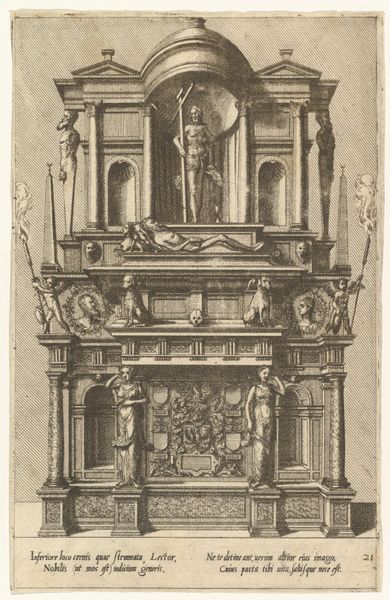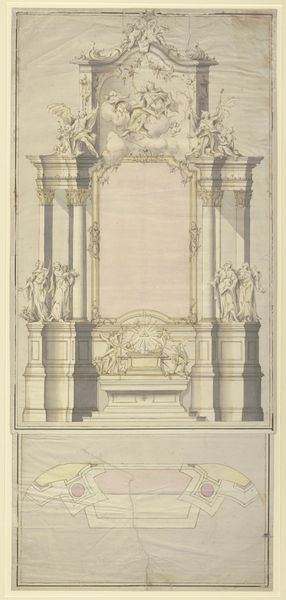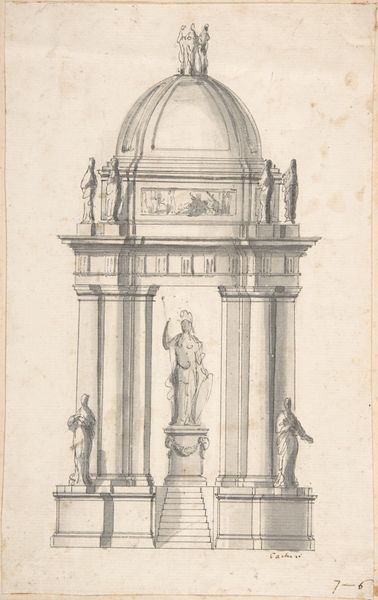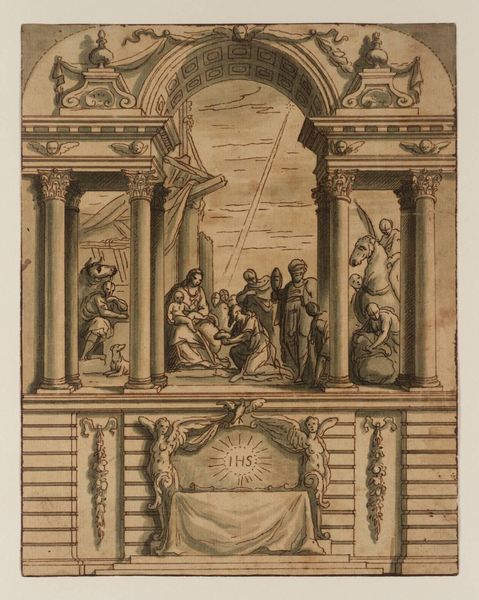
Design for an Altar: Virgin and Child Flanked by Saints, Two Angels in the Left and Right Foreground 1600 - 1800
0:00
0:00
drawing, coloured-pencil, print
#
drawing
#
toned paper
#
coloured-pencil
#
allegory
# print
#
11_renaissance
#
madonna
#
child
#
coloured pencil
#
angel
Dimensions: 8-1/2 x 6-1/8 in. (21.6 x 15.5 cm)
Copyright: Public Domain
Curator: We’re looking at "Design for an Altar: Virgin and Child Flanked by Saints, Two Angels in the Left and Right Foreground." It’s a drawing created sometime between 1600 and 1800, now held at the Metropolitan Museum. Editor: It has a hushed quality to it, a sense of contained grandeur, like viewing a stage set waiting for the players to arrive. Curator: The altar's structure, defined by clear lines, evokes classical architectural ideals. Observe how the symmetry creates a balanced composition. It's built around a central arched niche where the Virgin and Child are enthroned. Editor: The Virgin Mary is such a crucial image. By framing her within classical ideals and alongside powerful, almost architectural saints, the design reifies not just religious faith but hierarchical structures—social and gendered—of that time. Curator: Precisely, and consider how the angels holding candlesticks introduce diagonal lines, gently disrupting the rigid verticality, lending dynamism to what could be a static depiction. Editor: Though, their subservient posture is impossible to ignore. The angels are almost trapped by their classical poses. Are they figures of grace or do they embody the expectation of unyielding servanthood from the period? Curator: The toned paper softens the light, and this, combined with the coloured pencil technique, gives a depth to the design despite being a two-dimensional rendering. Editor: The artist, though anonymous, speaks volumes through this design. This altar isn't simply about divinity; it mirrors the socio-political altar upon which real-world devotion and sacrifices are demanded. It’s worth pondering how artistic design is embedded in power structures. Curator: It allows us a glimpse into how art and architectural design communicated messages during the period. Its construction alone displays intention beyond the functional. Editor: Indeed. Looking closely, we’ve explored not only the form, but what lies beneath this art. It reveals a landscape where faith, beauty, and social power were irrevocably intertwined.
Comments
No comments
Be the first to comment and join the conversation on the ultimate creative platform.
